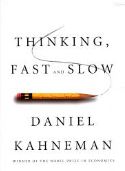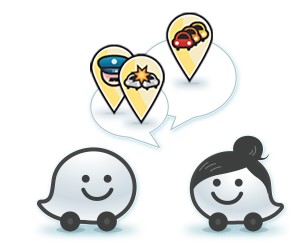I thought I had a great idea to create a #readinglist hashtag on Twitter so that I could track the books I had read and occasionally go back and leaf through the books looking for pearls of wisdom. The ‘going back and looking part’ did not happen and so I decided to summarize important nuggets of information in my blog for easy reference.
There is no theme or link between these three books, but they happen to be the last books I read that made an impact on me in some way.
 The Advantage: Why Organizational Health Trumps Everything Else in Business by Patrick Lencioni (2012) – an organization is considered healthy when its management, operations, strategy and culture come together and make sense. Lencioni states that almost all companies are smart in regards to finance, strategy, marketing and technology. But not all companies are healthy – with healthy meaning there are minimal politics and confusion, low turn over among good employees and there are high amounts of morale and productivity. One important aspect of healthy companies is the ability to create a sense of alignment and focus and that can be achieved by having a single top priority, or as Lencioni terms it – ‘the thematic goal’. The thematic goal can be likened to a rallying cry and can be answered by the question , What is most important, right now? The thematic goal must be singular or the one most important goal of the company. The thematic goal must be temporary and be achievable within a clear window of between three and twelve months. The thematic goal must be agreed upon by top executives and understood that it is their collective responsibility for achieving that goal. As leaders rally around the chosen thematic goal, they take off their department hats to lead and manage and solve problems for achieving organizational success.
The Advantage: Why Organizational Health Trumps Everything Else in Business by Patrick Lencioni (2012) – an organization is considered healthy when its management, operations, strategy and culture come together and make sense. Lencioni states that almost all companies are smart in regards to finance, strategy, marketing and technology. But not all companies are healthy – with healthy meaning there are minimal politics and confusion, low turn over among good employees and there are high amounts of morale and productivity. One important aspect of healthy companies is the ability to create a sense of alignment and focus and that can be achieved by having a single top priority, or as Lencioni terms it – ‘the thematic goal’. The thematic goal can be likened to a rallying cry and can be answered by the question , What is most important, right now? The thematic goal must be singular or the one most important goal of the company. The thematic goal must be temporary and be achievable within a clear window of between three and twelve months. The thematic goal must be agreed upon by top executives and understood that it is their collective responsibility for achieving that goal. As leaders rally around the chosen thematic goal, they take off their department hats to lead and manage and solve problems for achieving organizational success.
 Creative Confidence: Unleashing the Creative Potential Within Us All by Tom and David Kelley (2013) – IDEO is well known for their innovations and their successful human-centered innovation process which have led to many products that we all use on a daily basis. The Kelley’s describe four steps to their design-driven innovation: 1) get out into the world to interact with others to put yourself in others’ shoes. Be empathic and connect with others needs, desires and motivations to help trigger fresh ideas from a human-centered innovation perspective. 2) Synthesize and make sense of your observations by recognizing patterns, looking for themes and connecting the dots to what you have seen and gathered. This step involves translating what was discovered in research into actionable frameworks and principles. 3) The third step is to generate many ideas with divergent options which results in the most promising ideas going into rounds of quick prototypes. Users and stakeholders provide feedback for adaptations and iterations that result in workable solutions. 4) Implementation is the final step that will vary by product and varies by roadmap to the marketplace.
Creative Confidence: Unleashing the Creative Potential Within Us All by Tom and David Kelley (2013) – IDEO is well known for their innovations and their successful human-centered innovation process which have led to many products that we all use on a daily basis. The Kelley’s describe four steps to their design-driven innovation: 1) get out into the world to interact with others to put yourself in others’ shoes. Be empathic and connect with others needs, desires and motivations to help trigger fresh ideas from a human-centered innovation perspective. 2) Synthesize and make sense of your observations by recognizing patterns, looking for themes and connecting the dots to what you have seen and gathered. This step involves translating what was discovered in research into actionable frameworks and principles. 3) The third step is to generate many ideas with divergent options which results in the most promising ideas going into rounds of quick prototypes. Users and stakeholders provide feedback for adaptations and iterations that result in workable solutions. 4) Implementation is the final step that will vary by product and varies by roadmap to the marketplace.
 Thinking, Fast and Slow by Daniel Kahneman (2011) – our mental life is made up of two systems called System 1 and System 2. System 1 operates automatically, quickly with no effort (thinking fast) and System 2 is the conscious, reasoning side that has beliefs, makes choices and decides what to do (thinking slow). System 1 will continuously generate suggestions for System 2 in the form of intuitions, intentions and feelings. Once System 2 endorses information from System 1 then the impressions and intuitions turn into beliefs and impulses turn into voluntary actions. Most of what your System 2 thinks and does starts from System 1, but System 2 can over ride and have the final say. The purpose of explaining the mental flow process of the two systems was so I could share Kahneman’s explanation of the priming effect. The priming effect starts with a System 1 automatic process called associative activation where an idea evokes and triggers many other ideas in a cascading effect. A word/idea can evoke memories, emotions, and facial expressions that happen quickly, automatically and effortlessly. There are different types of associative links: 1) link by properties: banana –> yellow; 2) link by effect: virus –> cold; 3) link by category: football –> sport. One form of the priming effect is that if you are already thinking about a banana, the first color to come to mind would be yellow. Words like forgetful, bald, gray and wrinkle that are associated with the elderly have been shown to prime behavior like walking slower – even though the word old was never mentioned. Common thoughts and gestures can also prime our thoughts and feelings with research showing that a nodding of the head gesture (Yes) results in being more accepting to the topic at hand. Understanding the prime effect solidifies to me the importance of semantics as we interact with others and the importance of the thoughts that enter our mind throughout the day.
Thinking, Fast and Slow by Daniel Kahneman (2011) – our mental life is made up of two systems called System 1 and System 2. System 1 operates automatically, quickly with no effort (thinking fast) and System 2 is the conscious, reasoning side that has beliefs, makes choices and decides what to do (thinking slow). System 1 will continuously generate suggestions for System 2 in the form of intuitions, intentions and feelings. Once System 2 endorses information from System 1 then the impressions and intuitions turn into beliefs and impulses turn into voluntary actions. Most of what your System 2 thinks and does starts from System 1, but System 2 can over ride and have the final say. The purpose of explaining the mental flow process of the two systems was so I could share Kahneman’s explanation of the priming effect. The priming effect starts with a System 1 automatic process called associative activation where an idea evokes and triggers many other ideas in a cascading effect. A word/idea can evoke memories, emotions, and facial expressions that happen quickly, automatically and effortlessly. There are different types of associative links: 1) link by properties: banana –> yellow; 2) link by effect: virus –> cold; 3) link by category: football –> sport. One form of the priming effect is that if you are already thinking about a banana, the first color to come to mind would be yellow. Words like forgetful, bald, gray and wrinkle that are associated with the elderly have been shown to prime behavior like walking slower – even though the word old was never mentioned. Common thoughts and gestures can also prime our thoughts and feelings with research showing that a nodding of the head gesture (Yes) results in being more accepting to the topic at hand. Understanding the prime effect solidifies to me the importance of semantics as we interact with others and the importance of the thoughts that enter our mind throughout the day.
I thought it was going to be easy to leaf through the books I read looking at all my underlinings and asterisks and notations in the margins to quickly find the nuggets of information that I wanted to share. But the authors had all done a great job of building concepts upon concepts that I hope I have not done an injustice by only presenting single concepts from these books. Maybe these snippets have peaked your curiosity and have primed you to read the whole book? That is my opinion and a survey of one.
 I only started using Waze recently and the first day I used it for my drive home from work, I beat its estimated time by a few minutes. And I thought “that is a fun game – to beat Waze.” And then I thought “hang on, they know when I am speeding and that might not be a good thing!” Then I got to thinking about what new services Waze could offer that they are not offering today.
I only started using Waze recently and the first day I used it for my drive home from work, I beat its estimated time by a few minutes. And I thought “that is a fun game – to beat Waze.” And then I thought “hang on, they know when I am speeding and that might not be a good thing!” Then I got to thinking about what new services Waze could offer that they are not offering today.

 Time to start blogging again! I haven’t been blogging for over two years because I have been busy doing Predictive Analytics homework. I am almost done with an M.S. degree in Predictive Analytics from Northwestern University. This has been a great program for a number of reasons:
Time to start blogging again! I haven’t been blogging for over two years because I have been busy doing Predictive Analytics homework. I am almost done with an M.S. degree in Predictive Analytics from Northwestern University. This has been a great program for a number of reasons:














